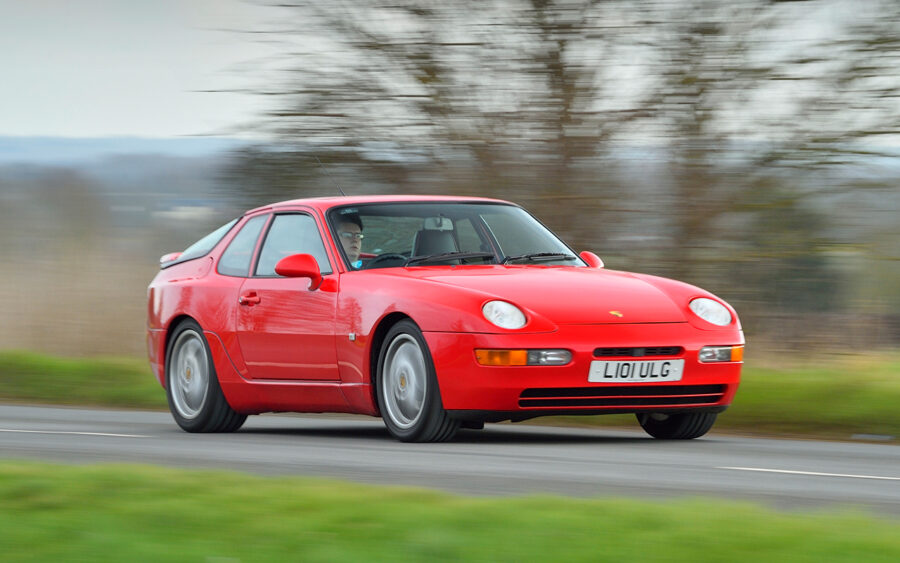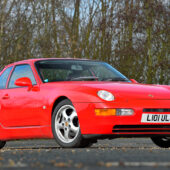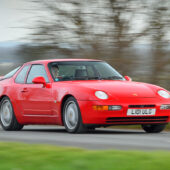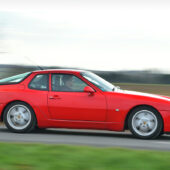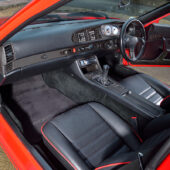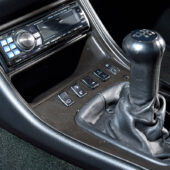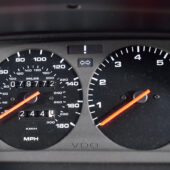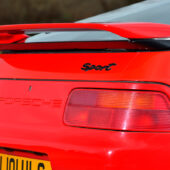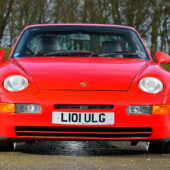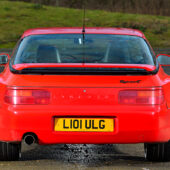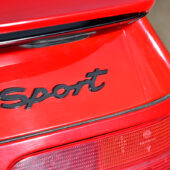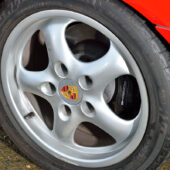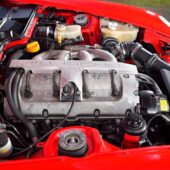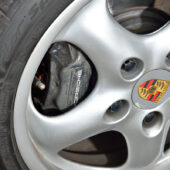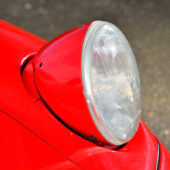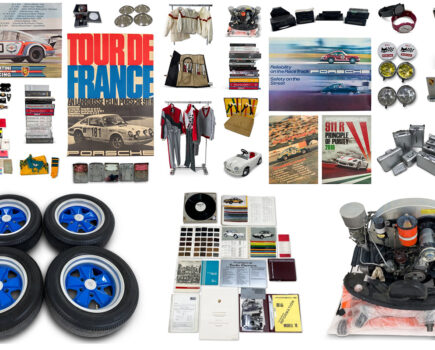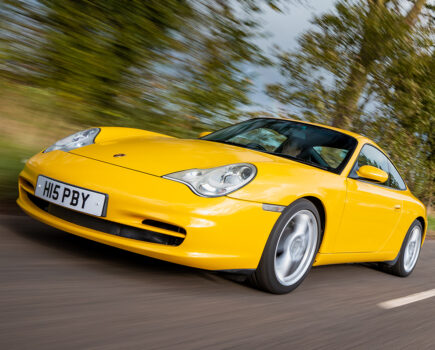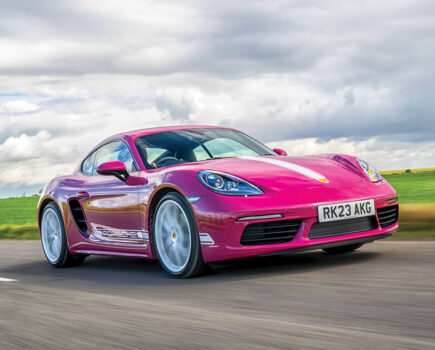A top-of-the-range Porsche 968 can be bought for less than bottom-of-the-barrel air-cooled 911s. Here’s how to buy the best
Words: Dan Furr Images: Matt Woods
Ask an enthusiast to name one of Porsche’s transaxle cars and they’ll most likely think of a 944 or a 928. They might even visualise a 924, but they’re unlikely to picture the 968. In part, this is due to the fact that so few 968s were assembled, but it’s also because there’s every chance those unfamiliar with Porsche’s legacy products (beyond the 911) will incorrectly identify a 968 as a 944. Which in a way, it is.
As outlined earlier in this issue of 911 & Porsche World, the 968 was intended to be launched as the 944 S3, the ultimate iteration of the best-selling Porsche product prior to the arrival of the Boxster, but thanks to the high number of replaced or re-engineered parts applied to the new car by Porsche’s chief designer, Harm Lagaaij, the final evolution of the four-cylinder, rear-wheel-drive, front-engined, water-cooled Porsche product line was deserving of its own name.
The 968’s DNA was clearly traceable all the way back to the narrow-bodied 924, yet the ‘new for ’92’ sports stunner had much in common with the 928 S4, including always visible headlamps and wraparound rear taillights. This was no coincidence — Lagaaij developed a common design language for Porsche’s model range, bringing the 911, 928 and 968 together as a family of products with front ends mirroring the look of the technological tour de force that was the 959. This approach was in contrast to promoting different models with few shared features, which had become tradition at Porsche, much to the detriment of the company as the 1990s drew near, when manufacturing costs were spiralling and sales were slumping.
Like the 944 before it, the 968 was available in hard-top and cabriolet formats. It was offered with a far greater selection of interior and exterior colour schemes than its predecessor, as well as an updated version of the 944 S2’s 3.0-litre inline-four, now delivering almost 240bhp free of forced induction and making use of Porsche’s all-new Variocam variable valve timing technology.
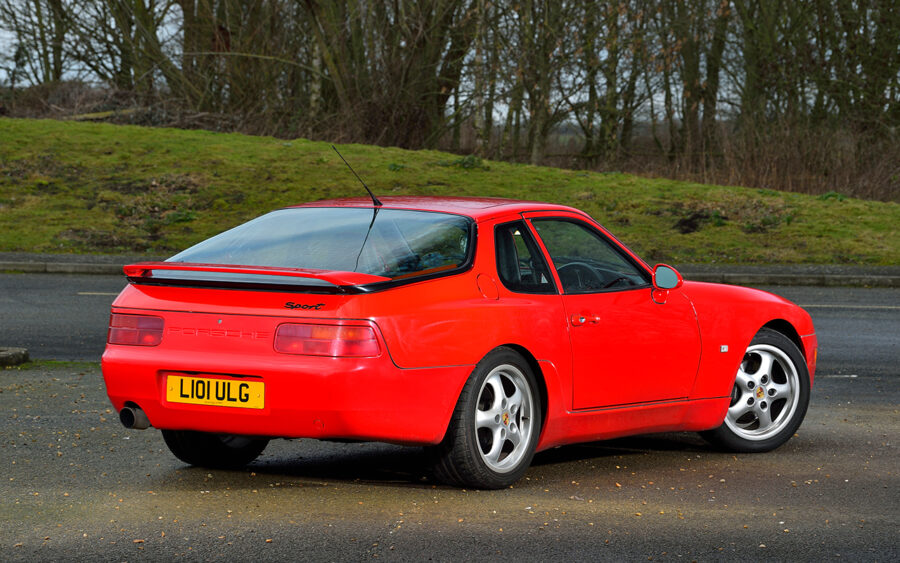
Bodywork
The 968 you’re looking at should display a matching Vehicle Identification Number (VIN) on its V5 document and on the identification plate attached to the offside slam panel. Additionally, the car’s VIN will be stamped into the offside inner wing. Elsewhere on the V5, you’ll see the engine number. Check this against the number etched into the rear nearside of the block. If they don’t match, ask the owner why the car has been fitted with a replacement powerplant. There might be a perfectly reasonable explanation for this (failure), but make sure it ties in with what the supporting paperwork suggests.
Receipts from Official Porsche Centres or recognised independent specialists should fill you with confidence and, in our experience, it’s more than likely the garage responsible for carrying out the work will be happy to chat to you about the fault and, importantly, the fix.
Spend a couple of quid at mycarcheck.com, where you can download a history report outlining any insurance claims, change of registration number, recorded mileage and whether there’s any outstanding finance on the car.
You should also enter the vehicle’s details into the DVLA’s free-to-use MOT history database. The service will return all test passes, failures and advisories registered as far back as electronic records are stored (which is helpful in identifying any ongoing mechanical or safety issues) and, if you have the V5 document number at your disposal, you can even see which test centre carried out the inspection.
You don’t need to park a 968 next to a 924 or a 944 to see obvious similarities between the styling of each model, with the 968 representing the most curvaceous iteration of Harm Lagaaij’s vision for Porsche’s four-cylinder transaxle offering. Despite being galvanised at the factory, however, the 968’s body attracts rust in hard-to-see spots, including around the rear suspension equipment and floor pans. It might be difficult to check these areas in advance of your test drive, but try to get underneath the car and have a good poke around. Better still, take someone with you who knows what they’re looking at. Fortunately, sill corrosion isn’t as profound as it is with the 944, although the 968’s chunky side skirts can hide a multitude of sins. Again, get on the floor and have a good look at the car’s metalwork.
Damage may have been inflicted upon 968s in track trim, so check panel gaps to make sure they’re straight. Look for signs of mismatched colour and don’t be afraid to ask questions. You might be eyeballing a Porsche which has simply been tapped with a trolley in a supermarket car park, but then again, the car might have been stacked into a tyre wall at a race circuit. Either way, Porsche body repairs shouldn’t be done on the cheap, so ask to see receipts relating to the work, if applicable. A paint thickness gauge will help you to determine if you’re looking at rear quarters full of filler.
If you’re intending to buy a 968 Cabriolet, thoroughly examine the condition of the car’s hood. Products from Renovo will help recolour canvas, but tears may be expensive to fix. Small nicks probably won’t get any worse, but check they’re not letting in water. Fully retract the hood to ensure its motors work.
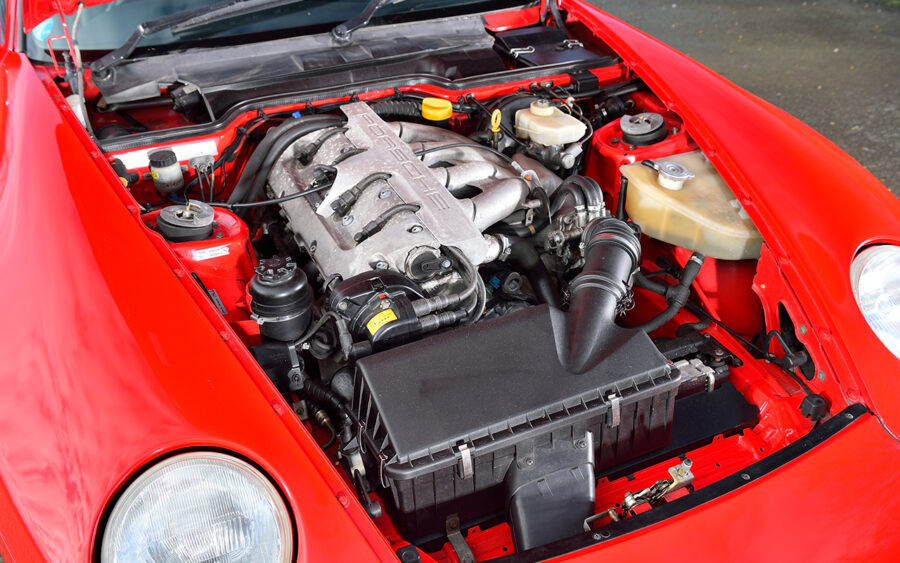
Engine and transmission
The 968’s engine is a naturally aspirated three-litre unit once touted as the world’s largest capacity four-cylinder production powerplant. Featuring a 104mm bore and an 88mm stroke, the smooth-running straight-four featured Porsche’s new-for-the-time VarioCam variable valve timing. Much like Honda’s more famous VTEC system, VarioCam continuously varies the timing of intake valves by adjusting the tension on the chain connecting the exhaust and inlet camshafts. This process ensures the engine is performing at its best for the driving conditions experienced at any given time, whilst keeping emissions at a safe and sensible level.
Check for any rattling noise emanating from the VarioCam system. Ask the seller when the parts were last examined for signs of wear. Also, look for documentation highlighting a change of fluids, filters, belts and the engine’s water pump. If there is no sign of this work taking place, consider it as a bargaining point. You won’t want to be driving the car far until the jobs are carried out, so factor the cost into the price you’re prepared to pay. If in doubt, call your nearest independent Porsche specialist and ask for a quote. It’s in their interest to put your mind at ease.
Finding a 968 with low mileage is a good result, but regular servicing and frequent oil changes are required on every classic Porsche, regardless of how much ground they’ve covered. Have a butcher’s at the dipstick for the colour and condition of oil. Do the same with the contents of the coolant expansion tank. All should be in good order. Thankfully, the 968’s 944 heritage means all mechanical parts and related consumables are in plentiful supply, with Porsche Classic releasing an ever increasing number of newly manufactured spares for legacy models.
Independent specialist retailers including Design 911, FVD Brombacher, Frazerpart, Rose Passion and 9Apart stock new genuine and aftermarket components. Second-hand spares are also in good supply, with Porsche Spares UK (formerly Woolie’s Workshop) recognised for possessing a wide variety of difficult-to-source trim, chassis and body components. In other words, don’t be worried about the availability of parts, whether new, used, OEM or aftermarket.
Are there any screeching noises when turning the steering wheel on full lock? If so, check the level of the power steering reservoir and ask the seller when the fluid was last changed. While you’re under the bonnet, eyeball all hoses and vacuum pipes for signs of wear. These are easily replaced, but it’s an expense you can do without.
968s benefit from a six-speed gearbox in place of the 944’s five-speed unit. A dual-mode four-speed Tiptronic gearbox (a new introduction to the Porsche product line) was offered on late 968s. Tiptronic and VarioCam made the 968 something of a technical marvel (and an expensive car to produce), adding to its enviable reputation as a perfectly balanced sports car, but be prepared for costly repairs if the tech-fuelled transmission goes wrong. For this reason, our advice is to seek a 968 equipped with a manual gearbox.
When out on your test drive, establish how easy is it to change gears. A high-miler may feel ‘notchy’, which may mean the clutch needs replacing. Sadly, you’ll need to prepare for the possibility of buying a new dual-mass flywheel at the same time. Linkages are known to wear, but this is a cheap fix.
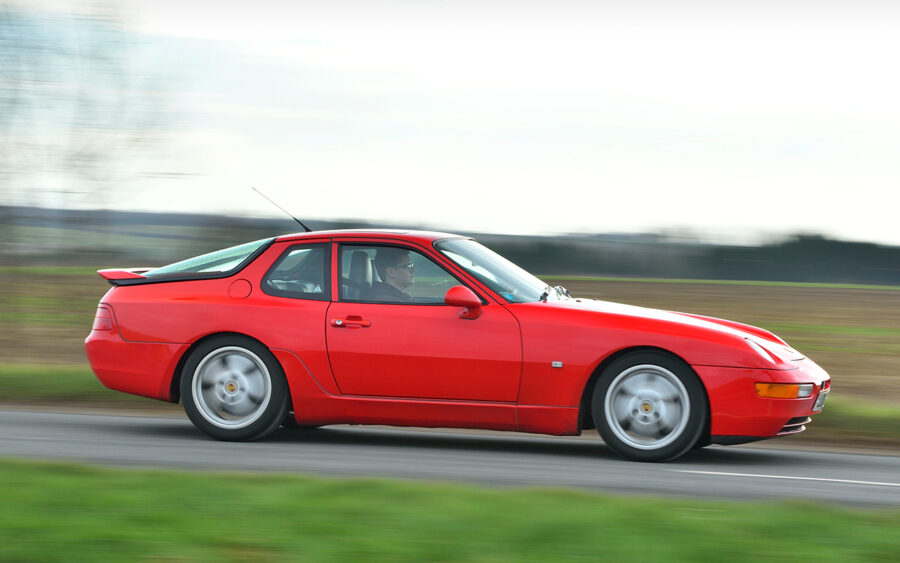
Suspension, steering and brakes
Brembo four-piston brakes — originally a plus point of the 944 Turbo — feature as standard equipment on the 968, as do lightweight aluminium semi-trailing arms, but an M030 sport chassis upgrade provides even greater stopping power thanks to even bigger calipers and cross-drilled 304mm discs. Whichever brake package the car you’re looking at makes use of, British braking equipment manufacturer, EBC Brakes, has a range of reasonably-priced discs and pads available in different designs and compounds to suit your driving style and the environment you’ll be travelling in.
Making use of the same suspension setup found on the 944 Turbo (McPherson struts with standard Sachs dampers or M030 cost-option Konis), the 968 wows with its lack of body roll, even when being thrown into tight corners at speed. The experience is enhanced further with Sport and Club Sport models thanks to their chunky anti-roll bars and a lower centre of gravity produced by a dropped ride height, but listen out for knocks over bumps, indicating worn bushes, which are common on a car of this age.
Check for irregular sounds at full lock, which may indicate a problem with the steering rack. If the car pulls to one side or feels tail-happy over bumps, then this may be a sign of tired shocks (check for leaks) or out-of-kilter alignment.
Porsche 968 suspension and brake upgrades aren’t in short supply, with retro-fit M030 cost options and aftermarket alternatives readily available from GAZ, Bilstein, Weitec and KW.

Interior and trim
When stepping inside a 968, it’s difficult to believe Porsche’s claim you’re sitting in a car comprising eighty percent new or re-engineered parts when compared to the 944 S2. Everything is utterly familiar, from the clocks to door cards to the gear knob. This certainly isn’t the step forward many would expect from a manufacturer’s new model, which goes some way toward highlighting early plans for the 968 to be badged as the 944 S3. Even so, the classic ‘oval dash’ is a great design, has weathered well and is far more modern than what was being fitted to the same-age 911.
Sporty variants of the 968 focus on weight saving, so forget about electrically adjustable seats or precious soundproofing materials; UK-only Sport models served as a half-way house between a standard 968 and the more extreme Club Sport. Thankfully, Porsche saw fit to continue its trend of equipping transaxles with ridiculously comfortable seats (even the Sport featured Comfort seats), but fabric centres can fray if exposed to direct sunlight for prolonged periods, dashboards can crack due to the same (a ‘greenhouse’ effect, where the sun cooks the dash with intense magnification of heat through the windscreen) and large Sport seat bolsters can show signs of wear.
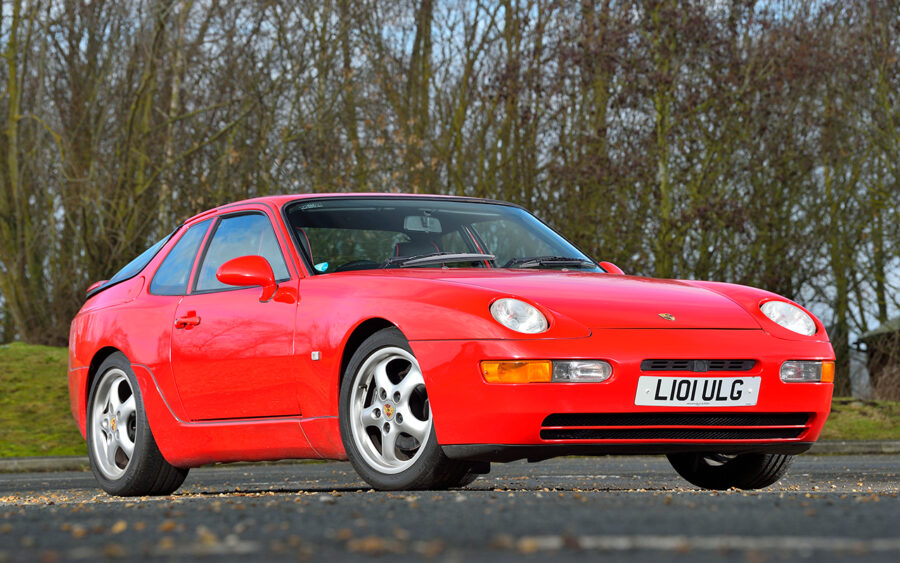
Porsche 968: our verdict
The Porsche 968 is perhaps the most complete iteration of the brand’s famous transaxle recipe, benefitting from years of development through a long line of impressive predecessors. It also happens to be the rarest of these. If there’s a positive to be drawn from the 968’s apparent anonymity outside the Porsche enthusiast scene, it’s how the model’s value on the used car market has remained pleasingly low. Even a top-flight, immaculately presented 968 Club Sport is going cost less than a rusty old 911 SC in need of an engine rebuild and a retrim.
The flip side of the same coin, of course, is that there aren’t as many Porsche 968 models to choose from as one might like (fewer than 13,000 examples of all variants were manufactured for worldwide distribution), but with base models often hovering around the ten grand price point, and with the UK-only Sport available for half as much again, it’s fair to say any 968 will deliver a huge amount of Porsche for your money. Go hit the classifieds!

